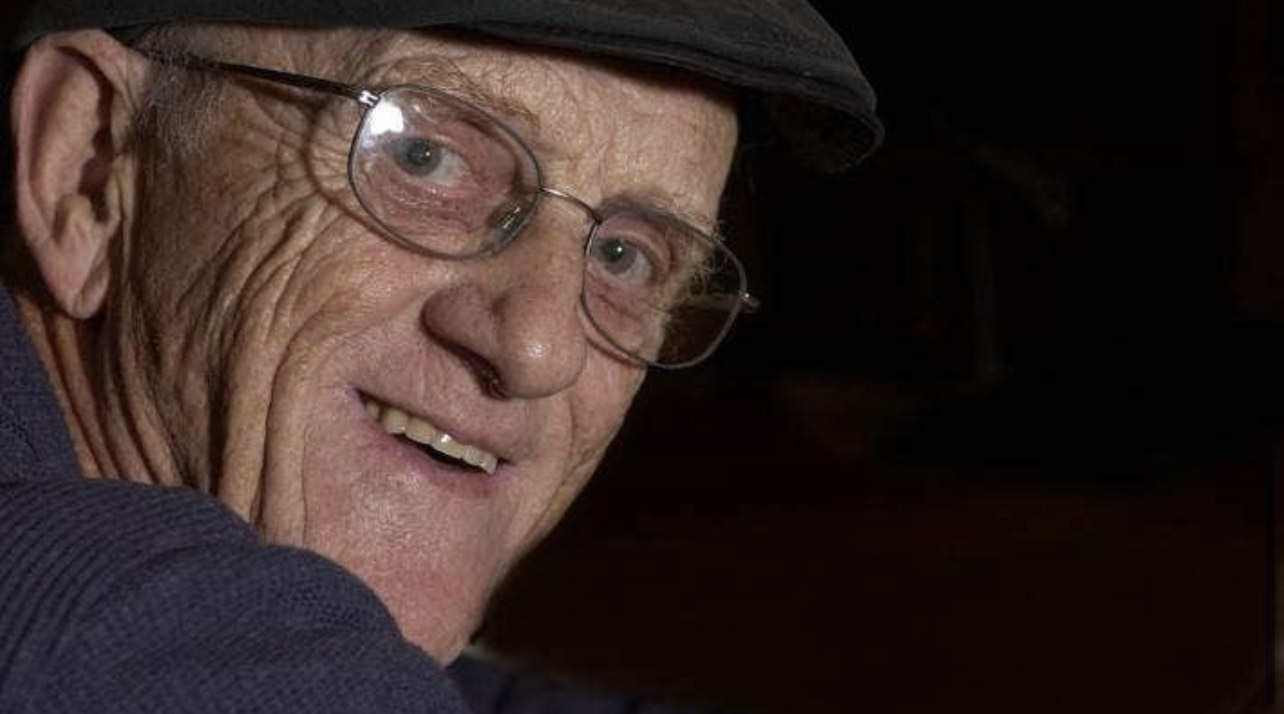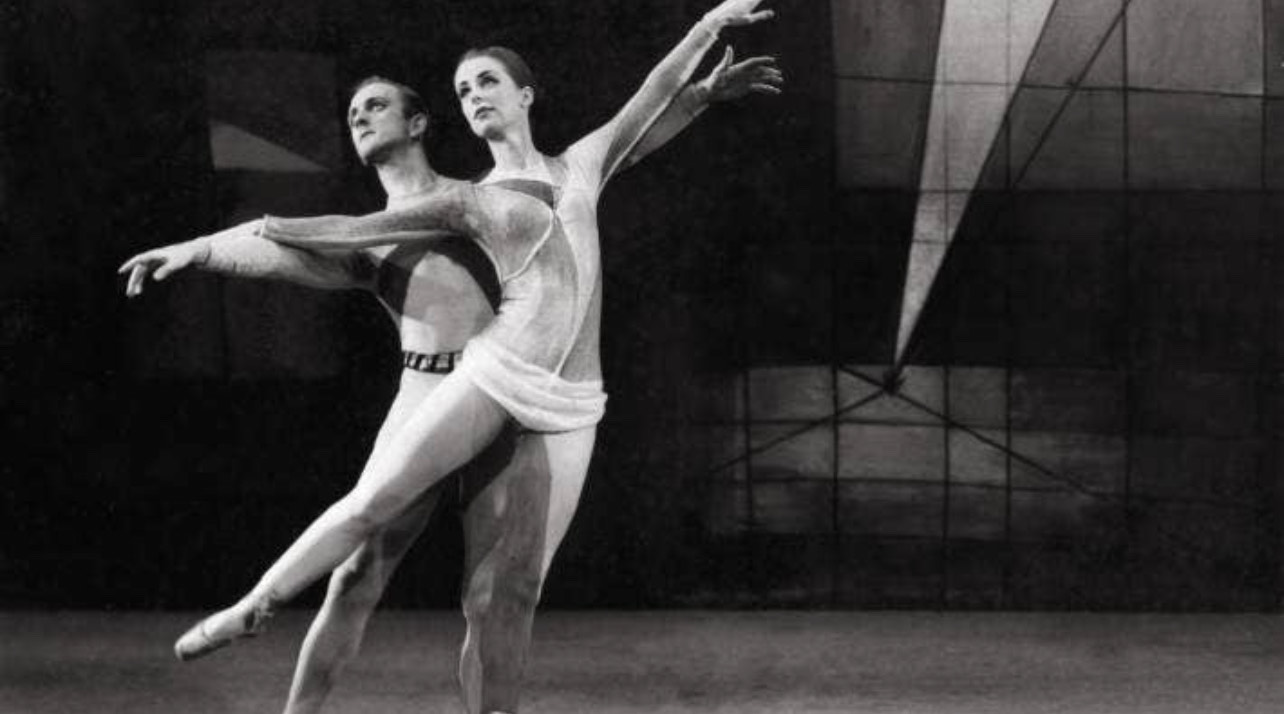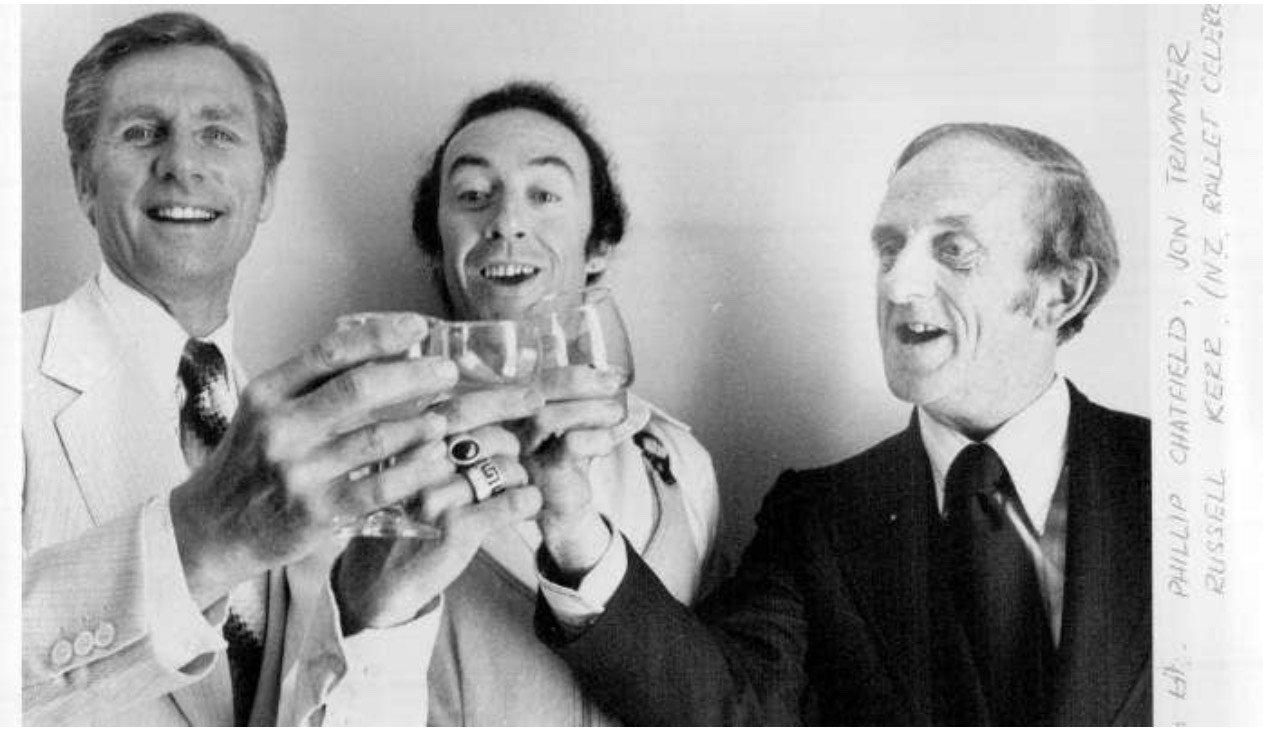![]()

Russell Ian Kerr, QSM, ONZM: dancer, choreographer; b February 10, 1930; d March 28, 2022
Russell Kerr, luminary of ballet as dancer, teacher, choreographer and producer, influenced generations of New Zealanders. Kerr’s hallmark talent was to absorb music and place character, narrative, human interest, emotion, poetry and comedy into the heart of ballet in the theatre.
Thrusting legs high in the air just because you can is the empty gesture of perfunctory performance that exasperated him. Shouting and sneering at dancers that they are not good enough was anathema. One dancer commented: “Mr Kerr always treated you as an artist, so you behaved like one.”
As a child, rheumatoid arthritis ailed him, and a doctor recommended dance classes. Kerr made impressive progress both in dancing and piano, and could have become a musician, but dancing won out when in 1951 he received a government bursary to study overseas.

In London he trained at Sadler’s Wells, with Stanislas Idzikowski (a dancer in both Pavlova’s and Diaghilev’s companies), and Spanish dance with Elsa Brunelleschi, who suggested he audition at Jose Greco’s leading flamenco company. He scored a contract, providing he change his name to Rubio Caro! How appropriate that his first job was as a dancing musician.
Leading choreographer Frederick Ashton declared Kerr’s body not suitably shaped for ballet. “I’ll show you,” he muttered to himself, and so he did. A review of Carnival of the Animals read: “Kerr’s performance as a snail was so lifelike you could almost see the slimy trail he left behind as he crossed the stage.” Kerr later pointed out, “not many dancers are complimented in review for their slimy trails”. His sense of humour and irony was always hovering.

Kerr danced with Ballet Rambert, and was encouraged towards choreography by director Marie Rambert. At Festival Ballet, as a soloist, he earned recognition during world tours for performances in Scheherazade, Prince Igor, Coppelia, Petrouchka. Nicholas Beriosov had been regisseur to choreographer Michel Fokine in the Ballets Russes de Monte Carlo, and Kerr's later productions from that repertoire had a pedigree second to none.
Kerr, by then married to dancer June Greenhalgh, returned home in 1957. He spent the entire journey planning how to establish a ballet company. Upon arrival he learned that Poul Gnatt, formerly with Royal Danish Ballet, had already formed the New Zealand Ballet and, thanks to Community Arts Service and Friends of the Ballet, had been since 1953 “touring to places in my country I’d never heard of. So I ditched my plans, and we found a way to work together”.
In Auckland, Kerr became partner/director of Nettleton-Edwards-Kerr school of ballet. Auckland Ballet Theatre had existed for some years, but he built up its size and reputation, staging over 30 productions. Perhaps the highlight of these was a season of Swan Lake on a stage on Western Springs lake. He produced a series, Background to Ballet, for Television New Zealand in its first year of broadcasting, and choreographed many productions for Frank Poore’s Light Opera Company.

In 1959, NZ Ballet and Auckland Ballet Theatre combined in the United Ballet Season, involving Greenhalgh, Rowena Jackson, Philip Chatfield, Sara Neil and others. The programme included Polovtsian Dances from Prince Igor and Prismatic Variations, co-choreographed by Kerr and Gnatt. Music and dance audiences in Auckland were astonished, and the triumphant season was repeated the following year in Wellington, when Anne Rowse joined the cast.
In 1960 a trust to oversee the NZ Ballet was formed, and by 1962 Kerr was appointed artistic director. His stagings of classics Giselle, Swan Lake, La Sylphide, The Sleeping Beauty, The Nutcracker, Coppelia, les Sylphides, and Scheherazade were balanced with new works, including the mysterious Charade, and whimsical One in Five.
Kerr used compositions by Greig, Prokofiev, Liszt, Saint-Saens and Copland for his own choreographies, Concerto, Alice in Wonderland, Carnival of the Animals, Peter and the Wolf, The Alchemist, The Stranger. In 1964 New Zealander Alexander Grant, renowned as a character dancer with England’s Royal Ballet, returned to perform the title role in Petrouchka, a superb production that alone would have earned Kerr worldwide recognition.

A fire at the company headquarters in 1967 meant a disastrous loss of sets and costumes. The colossal demands of running the company on close to a shoestring budget meant Kerr’s health was in an extremely parlous state. In 1969 Gnatt returned as interim director, with the redoubtable Beatrice Ashton as manager, and kept the company on the road.
Kerr worked closely with leading dancer Jon Trimmer, and his wife Jacqui Oswald, dancer and ballet mistress. They later joined the NZ Dance Centre he established in Auckland, with interesting new repertoire. Trimmer remembers: “Russell would send us out into the park, the street or the zoo, to watch people and animals, study their gait and gestures, to bring character to our roles.”
Kerr also mentored and choreographed for Limbs Dance Company. These were impecunious years for the Kerr family, but courage and the sticking place were found, and Kerr, as always, let music be his guide.

In 1978 he became director at Southern Ballet Theatre, staying there until 1990, later working with Sherilyn Kennedy and Carl Myers. In 1983 Harry Haythorne, as NZB’s artistic director, invited all previous company directors to contribute to a 30th anniversary gala season. Kerr’s satirical Salute, to Jacques Ibert’s music, had Trimmer cavorting as a high and heady Louis XIV.
Two lively ballets for children were based on stories by author-illustrator Gavin Bishop – Terrible Tom and Te Maia and the Sea Devil – but a whole new chapter in Kerr’s career was awaiting. After Scripting the Dreams, with composer Philip Norman, he created the full-length A Christmas Carol, alive with characters from Dickens’ novel (composition Norman, design Peter Lees-Jeffries). This powerfully atmospheric ballet later entered the RNZB repertoire, with new designs by Kristian Fredrikson.
Possibly his triumph, and certainly one of RNZB’s best, was Peter Pan (Norman & Fredrikson), with memorable performances by Trimmer as an alluring Captain Hook, Shannon Dawson as the dim-witted Pirate Smee, and Jane Turner an exquisitely mercurial Tinkerbell.

In 1993, in an unprecedented move, Kerr cast Douglas Wright, the country’s leading contemporary dancer, in the title role of Petrouchka. He claimed Wright’s performances challenged the legendary Nijinsky.
His sensitively nuanced productions of Swan Lake became benchmarks of the ever-renewing classic that deals with mortality and grief.
Leading New Zealand dancers credit Russell for formative mentoring. Patricia Rianne says: “I never worked with a better or more musical dance mind.” Among many others are Rosemary Johnston, Kerry-Anne Gilberd, Dawn Sanders, Martin James, Geordan Wilcox, Jane Turner, Diana Shand, Turid Revfeim, Shannon Dawson, Toby Behan, Abigail Boyle and Loughlan Prior.
The annual Russell Kerr Lecture in Ballet & Related Arts in 2021, about his own life and career, was movingly delivered by his lifelong colleague and friend, Anne Rowse. The lecture was graced by a dance, Journey, he’d choreographed for two Japanese students who came here to study. It would prove the last performance of his work, the more poignant for that.

Kerr was writing his memoirs, admitting the struggle, but determined to continue. He confessed: “Writing about my problem with drink is going to be a very difficult chapter.” He had told Brian Edwards in a memorable radio interview decades back, of the exhausting time when his colossal workload had driven him “to think that the solution to every problem lay in the bottom of the bottle”.
He eventually managed to turn that around and thereafter remained teetotal – but by admitting it on national radio, he was offering hope to anyone with a similar burden, himself proof that there is a way out of darkness.
Kerr was a good and decent family man, loyal friend, proud of his work but modest by nature, resourceful and determined by personality, honest in communication, distressed by unkindness, a leader by example. A phenomenal and irreplaceable talent, he was a very great New Zealander.
He is survived by son David, daughter Yvette, and their families.
Sources: David Kerr, Anne Rowse, Jon Trimmer, Patricia Rianne, Rosemary Buchanan, Martin James, Mary-Jane O'Reilly, Ou Lu.
View the original article courtesy Stuff.co.nz: https://www.stuff.co.nz/entertainment/arts/128232583/obituary-russell-kerr-dancer-choreographer-and-mentor-to-many
